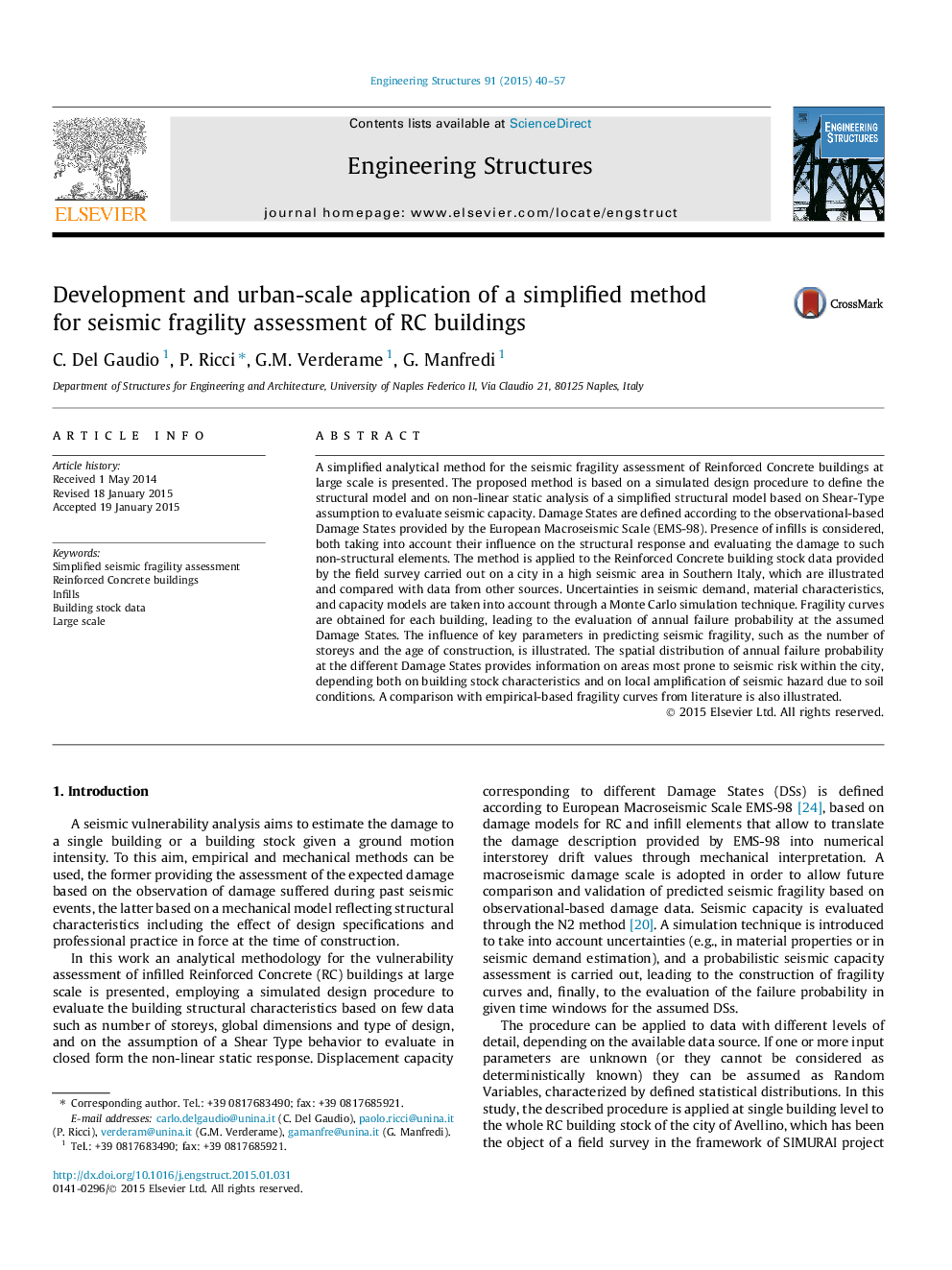| Article ID | Journal | Published Year | Pages | File Type |
|---|---|---|---|---|
| 6740344 | Engineering Structures | 2015 | 18 Pages |
Abstract
A simplified analytical method for the seismic fragility assessment of Reinforced Concrete buildings at large scale is presented. The proposed method is based on a simulated design procedure to define the structural model and on non-linear static analysis of a simplified structural model based on Shear-Type assumption to evaluate seismic capacity. Damage States are defined according to the observational-based Damage States provided by the European Macroseismic Scale (EMS-98). Presence of infills is considered, both taking into account their influence on the structural response and evaluating the damage to such non-structural elements. The method is applied to the Reinforced Concrete building stock data provided by the field survey carried out on a city in a high seismic area in Southern Italy, which are illustrated and compared with data from other sources. Uncertainties in seismic demand, material characteristics, and capacity models are taken into account through a Monte Carlo simulation technique. Fragility curves are obtained for each building, leading to the evaluation of annual failure probability at the assumed Damage States. The influence of key parameters in predicting seismic fragility, such as the number of storeys and the age of construction, is illustrated. The spatial distribution of annual failure probability at the different Damage States provides information on areas most prone to seismic risk within the city, depending both on building stock characteristics and on local amplification of seismic hazard due to soil conditions. A comparison with empirical-based fragility curves from literature is also illustrated.
Related Topics
Physical Sciences and Engineering
Earth and Planetary Sciences
Geotechnical Engineering and Engineering Geology
Authors
C. Del Gaudio, P. Ricci, G.M. Verderame, G. Manfredi,
